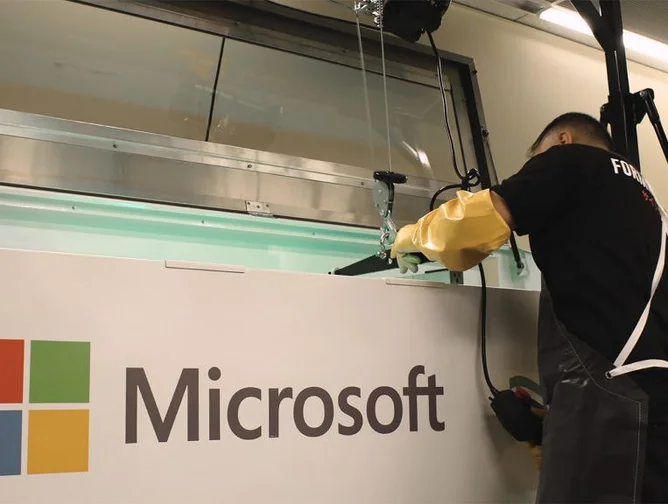Sustainability initiative promises elimination of cooling-related water consumption as Microsoft responds to growing water stress in key markets.
Data centres consume approximately 1% of global water withdrawals, with a single hyperscale facility using up to 1.5 million litres of water per day for cooling and humidification. As AI workloads drive compute density requirements to unprecedented levels, this water consumption continues to increase, presenting a growing challenge for data centre operators and local communities.
The challenge is particularly acute in regions experiencing water stress, where data centre development has faced mounting opposition from environmental groups and local authorities. Arizona’s Maricopa County, home to one of the world’s largest data centre clusters, has seen significant debate over water allocation for technology infrastructure amid prolonged drought conditions.
Now, Microsoft has announced plans to implement water-free cooling systems across its new data centre developments from August 2024, marking a fundamental shift in its approach to thermal management for high-density AI workloads.
Microsoft’s zero-water design heralds industry transformation
The new design eliminates water evaporation for cooling purposes through the implementation of chip-level cooling solutions, a technology that provides precise temperature control through a closed-loop system. The design is projected to reduce water consumption by 125 million litres annually per data centre facility.

Steve Solomon, Vice President of Data Centre Infrastructure Engineering at Microsoft, explains the technology: “These new liquid cooling technologies recycle water through a closed loop. Once the system is filled during construction, it will continually circulate water between the servers and chillers to dissipate heat without requiring a fresh water supply.”
The initiative forms part of Microsoft’s Data Centre Community Pledge, which outlines the company’s commitment to local economies and communities where it operates facilities. Steve emphasises that “protecting local watersheds is an important part of this pledge – especially in areas where water stress is growing.”
Water Usage Effectiveness shapes Microsoft’s environmental strategy
The company measures its water efficiency through Water Usage Effectiveness (WUE), a metric that calculates the ratio of annual water consumption for cooling and humidification against total IT equipment energy consumption. Microsoft says its data centres achieved a WUE of 0.30 L/kWh in the previous fiscal year: a 39% reduction from the 0.49 L/kWh reported in 2021.

The improvement stems from operational changes including expanded temperature ranges and the adoption of alternative water sources. The company has implemented reclaimed and recycled water systems across facilities in Texas, Washington, California, and Singapore.
“We have been working since the early 2000s to reduce water use and improved our WUE by 80% since our first generation of data centres,” Steve notes. “As water challenges grow more extreme, we know we have more work to do.”
Power usage impact drives innovation in cooling technologies
The transition from evaporative to mechanical cooling systems will affect the facilities’ Power Usage Effectiveness (PUE), a measurement of data centre energy efficiency. Microsoft reports the new chip-level cooling solutions permit higher operating temperatures than previous hardware generations, enabling the use of economising chillers with elevated water temperatures.
KEY FACTS
- 125 million: Litres of water saved annually per data centre under new cooling design
- 39%: Reduction in Microsoft’s Water Usage Effectiveness (WUE) between 2021-2023
- 80%: Improvement in WUE since Microsoft’s first generation of data centres
“The result is a nominal increase in our annual energy usage compared to our evaporative data centre designs across the global fleet,” says Steve. The company states that additional innovations to provide more targeted cooling are in development and are expected to continue to reduce power consumption.
Microsoft plans to pilot the zero-water evaporated designs at new facilities in Phoenix, Arizona and Mt. Pleasant, Wisconsin, with operations scheduled to commence in 2026. The company has initiated the implementation of next-generation cooling technology across all new data centre designs from August 2024.
The shift to next-generation data centres is expected to help reduce Microsoft’s WUE to near zero for each data centre employing zero-water evaporation. As the fleet expands, this transition will contribute to further reductions in Microsoft’s fleetwide WUE.
While the current fleet continues to operate with a combination of air-cooled and water-cooled systems, the company’s commitment to water conservation remains clear. “Starting August 2024, all new Microsoft data centre designs began using this next-generation cooling technology, as we work to make zero-water evaporation the primary cooling method across our owned portfolio. These new sites will begin coming online in late 2027.”



